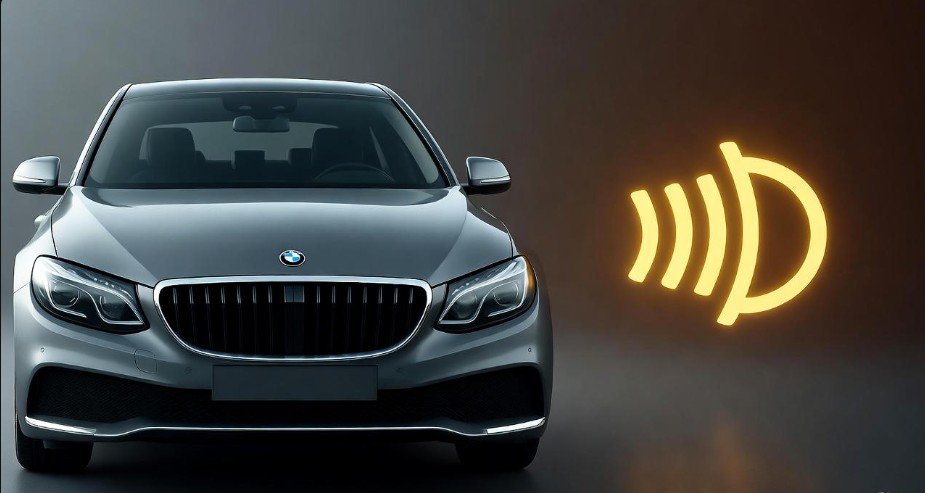How to Reset Brake Service Light on BMW: Easy Step-by-Step Guide for Every Driver

If you drive a BMW, you already know that this isn’t just a car—it’s a finely tuned piece of German engineering that thrives on precision. But like any masterpiece, your BMW needs regular care. One small yet vital part of that care is understanding the brake service light.
Imagine this: you’ve just had your brakes serviced, everything feels smooth, yet the brake warning light stubbornly glows on your dashboard. It’s frustrating, right? You might even think something’s wrong again. But here’s the truth—sometimes the light just needs to be manually reset after service.
Resetting the brake service light on a BMW isn’t about being a mechanic; it’s about understanding your vehicle better. In this guide, we’ll walk you through each step, explain why it matters, and share a few personal tips that could save you a trip to the dealership. Let’s make your BMW dashboard shine the way it should—clean and warning-free.
In This Article
- 1 Understanding What the Brake Service Light Means
- 2 Step 1: Turn on the Ignition – Setting the Stage
- 3 Step 2: Locate the Odometer Reset Button – The Hidden Key
- 4 Step 3: Press and Hold the Odometer Reset Button – The Magic Moment
- 5 Step 4: Release the Button and Select the Brake Reset Option
- 6 Step 5: Start the Engine – Confirming the Reset
- 7 Common Mistakes Drivers Make When Resetting the Brake Service Light
- 8 Additional Tips to Ensure a Successful Reset
- 9 When the Brake Service Light Won’t Reset – What to Do Next
- 10 When to Seek Professional Help
- 11 Long-Term Brake Maintenance Tips for BMW Owners
- 12 Why Resetting the Brake Service Light Is So Important
- 13 Troubleshooting: Why the Brake Light Keeps Coming Back
- 14 Pro Tip: Use a Diagnostic Tool for Precision
- 15 Frequently Asked Questions (FAQs)
- 16 Conclusion: Taking Control of Your BMW’s Brake Health
Understanding What the Brake Service Light Means

Before jumping into the reset process, it’s essential to know why this light appears in the first place. The brake service light is your BMW’s way of communicating that something related to the braking system needs attention—usually worn brake pads, low brake fluid, or a scheduled maintenance reminder.
When the light remains on even after new brakes have been installed, it doesn’t necessarily mean something is wrong. Instead, your BMW’s system simply needs confirmation that the service has been done. Think of it like clearing an alert on your phone after you’ve already read the message—it won’t disappear until you press “clear.”
Ignoring this light may not cause immediate damage, but it can cause confusion later. The system might misinterpret maintenance intervals, leading to inaccurate service reminders. Resetting it correctly ensures that your vehicle’s computer stays in sync with real-time maintenance, giving you peace of mind every time you hit the road.
Step 1: Turn on the Ignition – Setting the Stage
To begin, turn on the ignition but don’t start the engine. This simple act powers up your dashboard and onboard computer, allowing the system to communicate with you.
In most BMW models, this means pressing the start/stop button once without pressing the brake pedal. The dashboard should light up, displaying warning icons and indicators. If you see the brake service symbol, you’re in the right mode to begin the reset.
This step might sound basic, but skipping it can prevent the reset process from working. The key here is patience—make sure all lights have fully illuminated before moving forward. Think of it as giving your car a moment to “wake up” before asking it to perform a task.
Step 2: Locate the Odometer Reset Button – The Hidden Key
Now, let’s find the small but mighty button that makes the magic happen: the odometer reset button. In most BMW models, it’s located on the instrument cluster, right near the speedometer or odometer display.
Sometimes labeled as “BC” (Board Computer), this button does more than just reset your trip mileage—it acts as a gateway to your vehicle’s hidden service menus.
If you’re not sure where to find it, check your BMW’s manual for clarity. It’s often a small black button that you can easily press and hold. Keep in mind that some newer BMWs may use steering wheel controls instead, especially in digital instrument clusters.
The beauty of this step is that BMW designed it with simplicity in mind. No special tools, no complicated scanners—just a single button that unlocks access to your car’s service brain.
Step 3: Press and Hold the Odometer Reset Button – The Magic Moment
Here’s where things get interesting. With the ignition on, press and hold the odometer reset button for about 5 to 10 seconds.
During this time, you’ll notice that several indicators on the dashboard begin to change. The brake service light may start flashing, or a service icon may appear along with text like “Reset possible” or “Service menu.”
What’s happening behind the scenes is your BMW’s computer preparing to accept a new maintenance command. It’s like putting the system in edit mode. Once you see the signal or flashing icon, you’re ready for the next step.
If nothing appears, try holding the button a bit longer, or turn off the ignition and restart the process. Some models take a few extra seconds to register the command—especially older versions of the 3 Series, 5 Series, or X models.
Step 4: Release the Button and Select the Brake Reset Option
Once you’ve held the button long enough, release it. You should now see a menu displaying different service items such as “Oil,” “Brake Pads,” “Inspection,” etc.
Using the same button or your steering controls (depending on the model), scroll until you reach “Brake Pads” or “Brake Service.” This is the specific function you need to reset.
When it’s highlighted, press and hold the button again until you see the message “Reset?” appear. Release, then press once more to confirm. Within a few seconds, you’ll see a notification that says “Reset in progress” followed by “Reset successful.”
At that moment, your BMW acknowledges that the brake service is complete, and the light will disappear from your dashboard.
This step is like telling your car, “Relax, the brakes are taken care of.” It clears the message and syncs your vehicle’s maintenance records internally.
Step 5: Start the Engine – Confirming the Reset
Now that the system has been reset, it’s time to start the engine and double-check your success. Turn the ignition fully on and start your car as you normally would.
Look closely at your dashboard—if everything went smoothly, the brake service light should be gone. You might see it flash briefly during startup (that’s normal), but it should disappear within seconds.
If the light stays on, don’t panic. Sometimes it takes a moment for the system to register the reset, especially if other maintenance reminders are active.
At this point, take a short test drive around your block. During this drive, pay attention to your braking feel and dashboard behavior. If the light doesn’t return, congratulations—you’ve officially completed the BMW brake service light reset like a pro!
Common Mistakes Drivers Make When Resetting the Brake Service Light
Even though the process is simple, a few common mistakes can make it seem more difficult than it is. Let’s go over them to save you frustration:
-
Starting the engine instead of turning on the ignition: This prevents the reset menu from appearing.
-
Holding the button too short or too long: Timing matters; 5 to 10 seconds is the sweet spot.
-
Low brake fluid or incomplete service: The light may return if the system still detects an issue.
-
Ignoring other warning lights: Sometimes, a related issue like a worn sensor or fluid leak can keep the light on.
Here’s a quick summary table to help you troubleshoot:
| Problem | Possible Cause | Solution |
|---|---|---|
| Brake light remains on | Service not recorded | Repeat reset process |
| Light returns after reset | Low brake fluid | Top up to proper level |
| No reset menu appears | Wrong ignition mode | Turn ignition to “on” only |
| Other warning lights active | System error or sensor issue | Visit a BMW technician |
Avoiding these mistakes ensures your reset goes smoothly every time.
Additional Tips to Ensure a Successful Reset
Resetting the brake service light isn’t just about clearing a symbol—it’s about ensuring your vehicle is truly in good condition. Here are a few extra tips every BMW owner should keep in mind:
-
Check brake fluid regularly: A low level can trigger the brake light again even after resetting.
-
Use BMW-approved parts: Cheap pads or sensors may confuse the system’s calibration.
-
Don’t rush: Give your car time between steps for the system to recognize commands.
-
Keep a maintenance log: Record the date of each service and reset for better tracking.
-
Perform a diagnostic scan occasionally: This helps catch issues that aren’t visible on the dashboard.
Following these habits will help you maintain your BMW’s reputation for reliability and performance.
When the Brake Service Light Won’t Reset – What to Do Next
Sometimes, even after carefully following every step, your BMW brake service light refuses to reset. Don’t worry — this doesn’t necessarily mean something serious is wrong. Instead, it usually points to a small technical or procedural issue that’s easy to correct.
Start by repeating the reset process from the beginning. Make sure your ignition is in the correct position — “on” but without the engine running. This ensures the dashboard menu can properly display the service options.
If the light still remains on, try checking a few key areas:
-
Brake fluid level: If your fluid is below the minimum mark, top it up. Low fluid levels can keep the warning light active.
-
Brake wear sensors: These sensors track brake pad condition. If one is damaged or incorrectly installed, the system may not reset.
-
Battery voltage: A weak or dying battery can interrupt the reset process. Make sure your car battery has enough charge.
If all else fails, it’s time to use a BMW diagnostic tool (like the iCarsoft or Foxwell scanner) or visit a certified BMW technician. Sometimes, the control unit needs a professional scan to clear persistent service records.
Remember, the brake system is the heart of your car’s safety — if the light stays on, never ignore it. It’s your car’s way of saying, “Something still needs attention.”
When to Seek Professional Help
While most BMW owners can reset the brake service light themselves, there are times when professional assistance is not just recommended — it’s necessary.
If your reset attempts fail multiple times, or if you notice unusual brake behavior (like a soft pedal, grinding noise, or reduced stopping power), don’t take chances. These could indicate deeper issues like air in the brake lines, faulty sensors, or uneven pad wear.
A professional BMW technician has the right tools and diagnostic equipment to inspect the ABS system, electronic control unit (ECU), and related components. They can also perform software updates if the issue is linked to a firmware glitch — something common in newer BMWs with advanced digital dashboards.
Think of it like going to a doctor after trying home remedies. You’ve done the basics, but now it’s time for expert eyes to make sure nothing serious is hiding beneath the surface.
Long-Term Brake Maintenance Tips for BMW Owners
Resetting the service light is only part of maintaining your brakes — the real key is preventive care. BMW’s braking system is engineered for precision, but it performs best when maintained regularly.
Here are a few golden rules to extend your brake life and reduce future issues:
-
Inspect brake pads every 10,000 miles: Even if the light isn’t on, check for wear or uneven surfaces.
-
Flush brake fluid every 2 years: Brake fluid absorbs moisture over time, which can cause corrosion or reduced braking efficiency.
-
Avoid aggressive driving: Hard braking generates heat that wears out pads and rotors faster.
-
Clean brake components: Dust and dirt can interfere with sensor readings, causing false alerts.
-
Use OEM parts only: Original BMW brake pads, sensors, and fluid are designed to work seamlessly with your car’s system.
BMWs are performance vehicles — they’re meant to stop as confidently as they accelerate. Keeping your brakes in shape not only prevents future warning lights but ensures every drive remains as safe and smooth as the first day you drove it home.
Why Resetting the Brake Service Light Is So Important
It’s tempting to ignore a small light on your dashboard, especially if you know the brakes are fine. But leaving the brake service light on can cause bigger problems than you think.
First, it throws off your maintenance schedule. BMW’s onboard computer tracks your service intervals, and if it isn’t reset properly, it can’t accurately remind you of future maintenance.
Second, the constant warning can mask real issues. If another brake-related problem arises, you might not notice it right away since the light is already on.
Finally, a glowing brake light can affect resale value. Buyers or dealerships might assume the vehicle has unresolved issues, even if everything’s fine mechanically.
In short, resetting the light isn’t just about aesthetics — it’s about keeping your vehicle’s digital brain up-to-date. A clean dashboard equals a clean bill of health for your BMW.
Troubleshooting: Why the Brake Light Keeps Coming Back
So, you’ve reset the light and it disappears — but then it comes back a few days later. Annoying, right? Here’s why that might happen:
-
Worn brake sensor: BMWs use electronic wear sensors that trigger the warning. If the new pads didn’t come with new sensors, the light may reappear.
-
Faulty brake fluid sensor: Even if your fluid level is perfect, a bad sensor can trick the system into thinking it’s low.
-
Software glitch: Like any modern tech, BMW’s digital systems sometimes need a quick reprogramming or update.
-
Incomplete reset: The system didn’t fully register the reset process. Repeating it usually helps.
If you’ve ruled out all of the above, have your brake control module checked by a professional. Sometimes, it’s simply a communication issue between the system’s memory and sensor data.
Pro Tip: Use a Diagnostic Tool for Precision
If you’re a hands-on BMW owner, investing in a diagnostic scan tool can make your life much easier. These handheld devices plug into your car’s OBD-II port and give you direct access to hidden service menus, including brake light resets.
Tools like Foxwell NT510 Elite or iCarsoft BMII are designed specifically for BMWs and allow you to:
-
Reset service lights instantly
-
Check live sensor data
-
Clear error codes
-
Monitor brake pad wear electronically
This not only saves money in the long run but gives you full control over your car’s health. It’s like having your own pocket-sized mechanic.
Frequently Asked Questions (FAQs)
1. How often should I reset the brake service light?
You should reset the brake service light every time the brake service or pad replacement is completed. It keeps your car’s system synchronized with the maintenance schedule.
2. Can I reset the brake service light without a tool?
Yes. You can reset it manually by using the odometer reset button and following the ignition steps described above. Most BMW models don’t need special tools for this process.
3. What if the brake light doesn’t go off after a reset?
Check your brake fluid level, brake sensors, and battery voltage. If everything looks normal but the light persists, consult a BMW-certified mechanic.
4. Does resetting the brake service light affect my warranty?
No, it doesn’t. Resetting the light simply updates the maintenance record and has no impact on your BMW warranty.
5. Can I drive with the brake service light on?
You can drive short distances if you’re certain the brakes are working properly. However, it’s best to address the issue promptly to avoid confusion or missed service alerts.
6. Do I need to reset other service lights after brake maintenance?
Sometimes, yes. If your BMW displays multiple service reminders, you can reset them individually through the same menu system.
7. Is it safe to reset the light before completing brake service?
No. Always perform or confirm the actual brake service before resetting. The reset is meant to acknowledge completed work, not skip it.
8. How do I know if my BMW brake sensors need replacing?
If your warning light keeps coming back soon after replacement, or if you see “Service due” repeatedly, chances are the sensors are worn or damaged and need replacement.
Conclusion: Taking Control of Your BMW’s Brake Health
Owning a BMW means enjoying a blend of power, luxury, and technology — but it also means staying in tune with your vehicle’s needs. Resetting the brake service light may seem like a small task, but it plays a big role in maintaining your car’s precision and reliability.
By learning this simple step-by-step reset method, you’ve taken control of one of your car’s key systems without needing to visit a mechanic. It’s empowering, cost-effective, and keeps your dashboard clean of unnecessary alerts.
Still, remember that a light reset isn’t a substitute for genuine maintenance. Regular brake inspections, proper fluid checks, and timely pad replacements are essential for your safety.
Your BMW deserves attention, not neglect — and with this guide, you now have everything you need to keep that signature BMW confidence every time you press the brake pedal.






